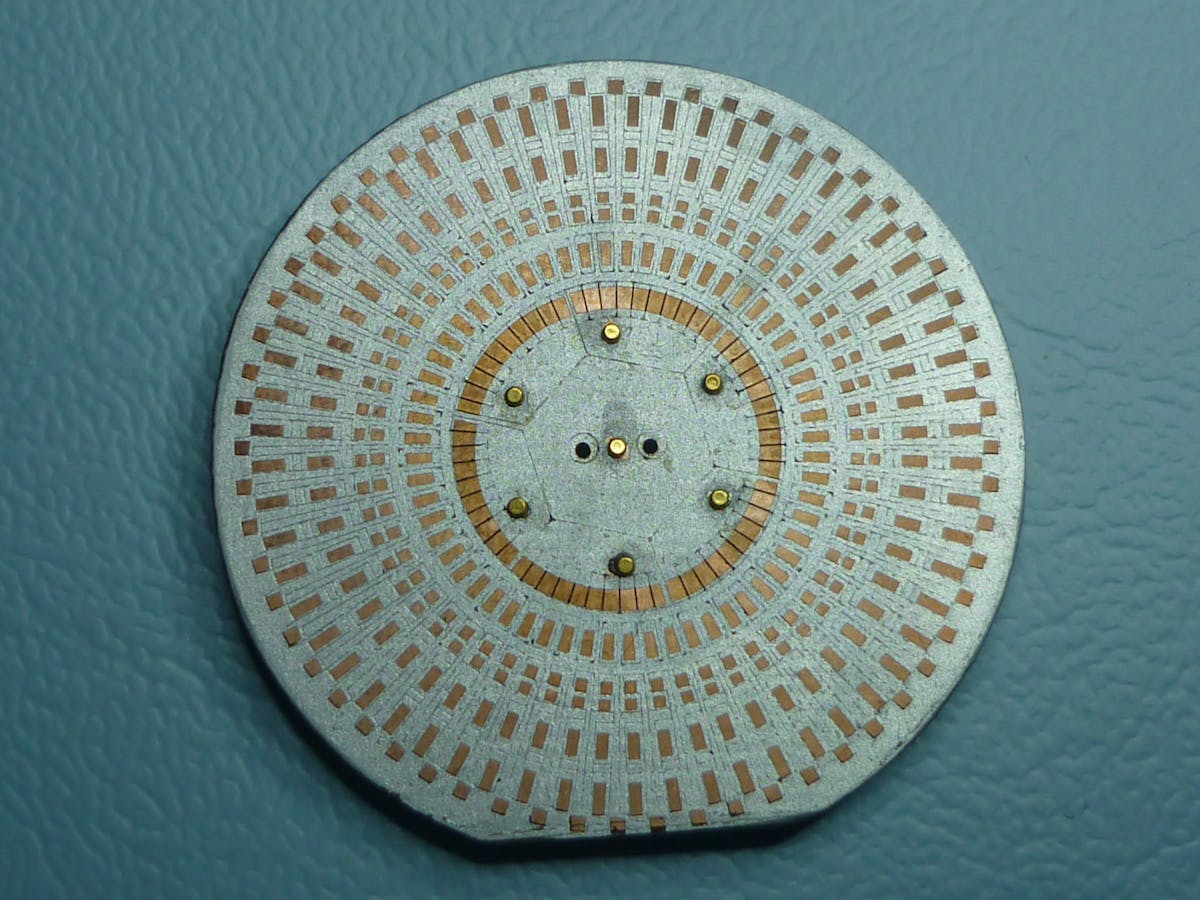LED_Watch Achieves a Quasi-Analog Display with 240 LEDs and Unique Etching Technique
LEDs in concentric circles simulate physical clock hands in this ATtiny-powered wristwatch.

Wristwatches with LEDs are usually digital timepieces. Their faces might display seven-segment numerals or use LEDs to indicate the time as binary dots. However, Armin Bindzus' latest watch project takes a different and attractive approach. The LED_Watch creates a quasi-analog display with 240 LEDs on a uniquely made circuit board.
Bindzus accomplished LED_Watch's quasi-analog display by making a PCB with 240 concentrically arranged surface-mount LEDs. Two inner "rings" and two outer "rings of LEDs make up the watch hands. The inner ring creates the hour's hand, the combined rings are the minute's hand, and the outer rings briefly flash as the second's hand.

If you look closely at the bare circuit board, it might look like a typical PCB with a white solder mask. But it is not a standard printed circuit board! Bindzus manufactured it in-house with a laser cutter! Instead of trying (and failing) to etch the board directly with the laser, Bindzus used a combined laser cutting and chemical etching technique learned from a previous project.
This board started with Bindzus applying lamination to both sides of a copper-clad board. A laser cutter ablated isolation areas to create an etching mask. Then, iron trichloride creates isolation trenches by etching away the exposed copper. A second pass through the laser cutter ablates the lamination on pads. The remaining lamination becomes the solder mask! Finally, Bindzus applies a zinc paste (for pipe fittings) with a hot air gun to finish the exposed copper pads. The unique result is an impressive-looking non-printed circuit board.
A Microchip ATtiny1614 eight-bit AVR microcontroller (MCU) drives LED through HEF4094 shift-and-store registers. The MCU saves power by staying in sleep mode until an Analog Devices (formally Maxim) DS3231 real-time clock wakes it up via interrupt. That interrupt occurs every 1.4 milliseconds to manage the LEDs. A tilt switch turns off the boost converter for the LEDs to save power. These techniques mean a 74 mAh LiPo battery provides up to 20 days on a single charge!
At the center of LED_Watch's face is a light-dependent resistor (LDR). Since this resistor limits the current through the LEDs, it also controls their brightness. This clever relationship also means the watch has an automatic brightness control based on the ambient light!
Like all watches, LED_Watch needs input controls to set the time. Bindzus designed capacitive touch areas instead of mechanical buttons. This design choice gives the watch a modern user experience and makes it highly water resistant!
For more information about the design, visit the LED_Watch page on dropletwatch.com. Bindzus provides more photos, the schematic, and a detailed circuit design explanation.
Electronics enthusiast, Bald Engineer, AddOhms on YouTube and KN6FGY.


